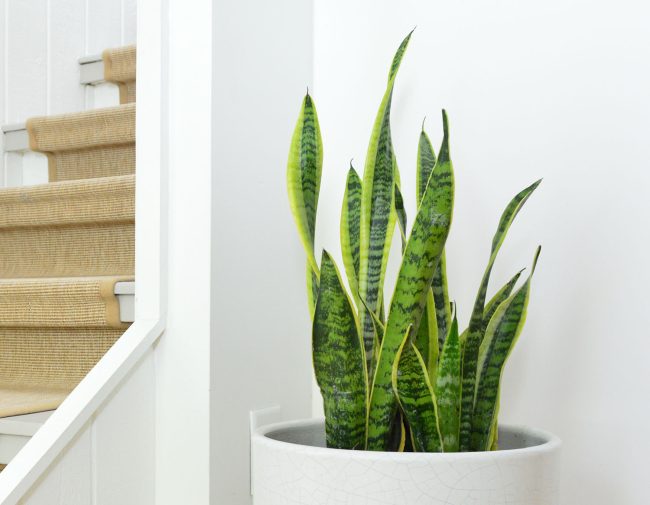
If you’re someone who thinks you can’t keep a plant alive – this plant will prove you wrong! In fact, you’ve probably seen one at a doctor’s office, home improvement store, or hotel lobby because they’re so low maintenance. Thanks to being so easy to care for and widely liked, they’re a great option for anyone who wants a low-effort plant. So today we’ll share why serial plant-killers and seasoned plant lovers all love this spear-shaped beauty.
There are dozens of varieties of snake plants, but today we’ll mainly be talking about the most popular variety: Dracaena trifasciata ‘Laurentii.’ The Laurentii refers to the specific variant of this species seen in these photos. They’re identifiable by their stiff, sword-like leaves with bright yellow edges.
Snake Plant: Quick Facts
Here’s what you need to know about your snake plant at a glance:
- Latin name: Dracaena Trifasciata (formerly Sansevieria Trifasciata)
- Common names: Snake Plant, Mother-in-Law’s Tongue, Devil’s Tongue, Saint George’s Sword, Vipers Bowstring Hemp, Spear Plant
- Native to: West Africa
- Light: Prefers medium, indirect light
- Watering: About every 2 weeks or whenever the soil is dry
- Soil: Well-drained soil such as a cactus, palm, or succulent mix
- Ideal Humidity: Average household humidity
- Ideal Temperature: 70-90 degrees
- Cold Hardiness: USDA Zones 9-11
Benefits Of A Snake Plant
Beyond being attractive and low maintenance, snake plants are also popular houseplants for their health benefits.
Continue reading Snake Plant – Care Guide at Young House Love.

